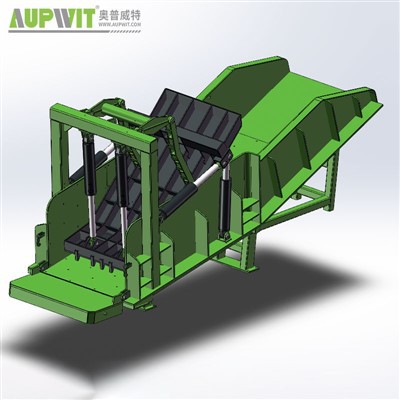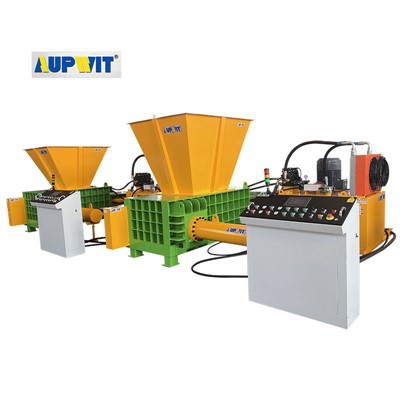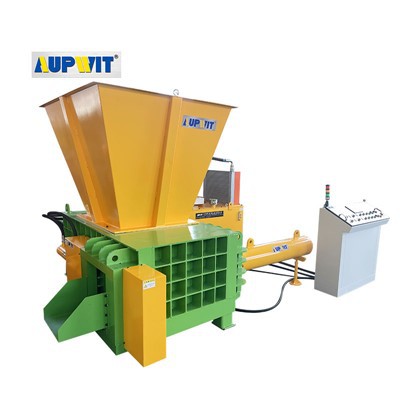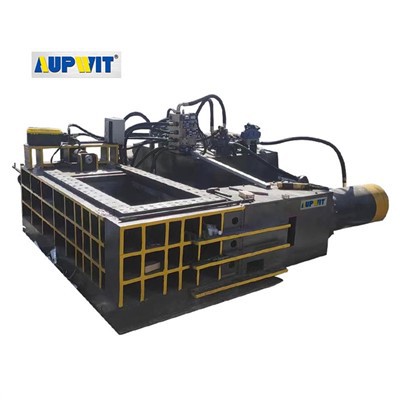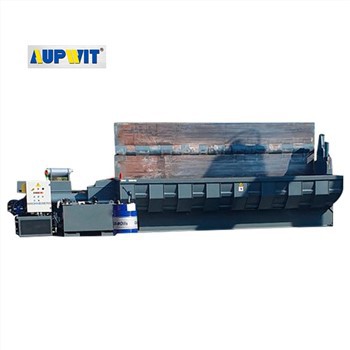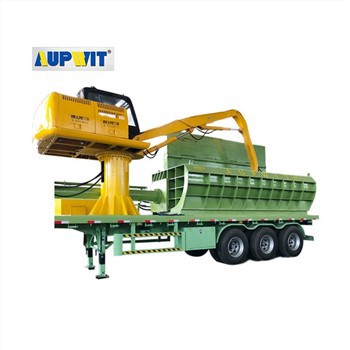Introduction
As the global demand for sustainable metal recycling continues to grow, the recycling of end-of-life vehicles (ELVs) has become a major component of the scrap metal industry. Disposing of car bodies in an efficient and environmentally responsible manner requires robust, reliable, and high-capacity equipment. A heavy-duty metal baler for car bodies recycling is engineered specifically to process large, bulky, and irregularly shaped vehicle shells into compact, high-density bales, optimizing storage, handling, and transportation.
This article explores the design, features, and advantages of heavy-duty metal balers in automotive recycling, as well as their critical role in enhancing efficiency and environmental compliance.
The Role of Heavy-Duty Metal Balers in Car Body Recycling
End-of-life vehicles contain a mix of ferrous and non-ferrous metals, plastics, rubber, and glass. Before recycling, these materials must be separated and processed efficiently. The car body—the largest metal component—is often stripped of valuable parts and fluids, then compacted by a heavy-duty metal baler.
These machines compress the metal body shell into dense bales or blocks, reducing its volume significantly and facilitating downstream processing at steel mills or shredding facilities.
Key Features of Heavy-Duty Metal Balers for Car Recycling
-
Massive Compression Force
Heavy-duty balers typically operate with hydraulic forces ranging from 120 to 300 tons, capable of crushing full vehicle shells and reducing them to manageable sizes. This level of power ensures thorough compaction, even of reinforced structures like vehicle frames. -
Wide Feed Chambers
Car body balers feature large feed openings designed to accept entire vehicle shells or large panels without pre-cutting. This reduces processing time and manual labor, increasing throughput and safety. -
Automatic and Semi-Automatic Operation
Modern balers are equipped with PLC-based controls and programmable modes for efficient and repeatable operation. Some models include automatic feeding systems and bale ejection for seamless processing in high-volume facilities. -
Shearing Functionality (Optional)
Many heavy-duty balers come with integrated shear heads, allowing operators to not only bale but also cut oversized or protruding parts from the car body. This dual function enhances versatility in scrap handling operations. -
Rugged Construction
These machines are built with reinforced steel frames, heavy-duty hydraulic cylinders, and wear-resistant liners to withstand the continuous impact and abrasion caused by compressing large, jagged metal structures. -
Bale Size and Weight Customization
Operators can adjust the baling parameters to produce bales in standardized sizes (e.g., 600x600mm or 800x800mm) depending on transportation requirements and buyer specifications.
Advantages of Using Heavy-Duty Balers in Car Recycling
-
Volume Reduction and Space Optimization
By compressing large vehicle shells into small, dense blocks, balers can reduce metal volume by up to 80%, significantly lowering the cost of storage and transportation. -
Increased Throughput
Heavy-duty balers are designed for continuous operation, allowing scrapyards and recycling centers to process dozens of car bodies per hour, depending on machine size and automation level. -
Improved Worker Safety
The automated design minimizes manual handling of heavy and sharp vehicle components, reducing the risk of injury. Safety interlocks, emergency stop systems, and enclosed working zones are standard features. -
Higher Scrap Value
Densely packed bales are more attractive to steel mills and smelters, as they improve furnace efficiency and reduce melting energy costs. Clean, compact bales can fetch higher market prices compared to loose scrap. -
Environmental Compliance
Compacting car bodies before shipment reduces carbon emissions associated with transportation. Additionally, modern balers are built to meet ISO, CE, and EPA standards, supporting green recycling practices.
Applications in the Recycling Industry
-
Vehicle Dismantling Yards: After fluids, batteries, and valuable parts are removed, balers compress the remaining shell for transport to shredders or melting facilities.
-
Scrap Metal Processing Plants: These facilities rely on balers to prepare feedstock for sorting, shredding, and smelting.
-
Steel Mills and Foundries: Receive baled scrap directly from balers for efficient reprocessing into new steel products.
-
Export Facilities: Compact bales optimize container space, reducing shipping costs when exporting scrap metal overseas.
Choosing the Right Heavy-Duty Baler for Car Bodies
When selecting a baler for vehicle shell recycling, consider the following:
-
Compression Force: Ensure the machine can handle the bulk and density of full car shells.
-
Chamber Size: Must accommodate a wide variety of vehicle shapes and sizes without preprocessing.
-
Cycle Time: Faster cycle times increase overall productivity.
-
Build Quality: Machines from trusted manufacturers offer better durability, parts availability, and after-sales service.
-
Energy Efficiency: Look for balers with energy-saving hydraulic systems to reduce operational costs.
Popular manufacturers include Jiangyin Shengbo, Enerpat, MAC (Italy), and Sierra (USA)—offering models customized for automotive applications.
Conclusion
A heavy-duty metal baler for car bodies recycling is a powerful asset for any scrap processing operation dealing with automotive waste. These machines combine high compression force, durability, automation, and safety to maximize recycling efficiency, reduce transportation costs, and ensure regulatory compliance. As the demand for metal recycling grows, investing in the right baler technology ensures your facility remains competitive, profitable, and environmentally responsible.


